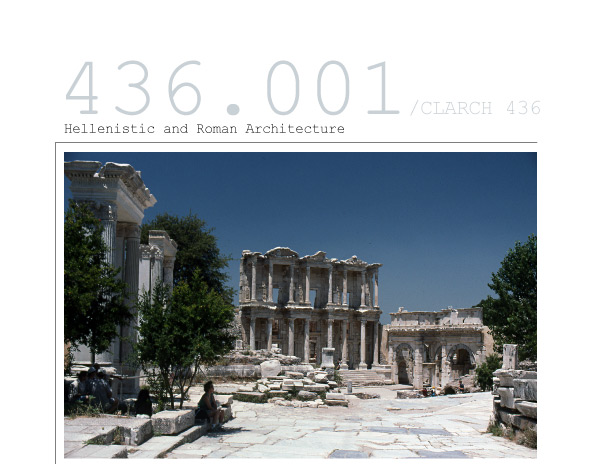
This course surveys the art and archaeology of Greece and the Greek-speaking world in the Roman period. From the time of Alexander the Great in the 4th century B.C.E. to the Arab conquests of the 7th century C.E., the dominant civic culture of the entire eastern Mediterranean region extending from Greece proper through Asia Minor, Syria, the Lebanon, Palestine, and Egypt as far as Libya was Greek. The complex relations between the indigenous cultures of these regions and their Greek and Roman conquerors will form the major subject of the course; it will focus on the evidence of architecture and architectural decoration, and on the evolution of urban form. Special topics of investigation will include: the Romanization of Greek civic architecture in early imperial Asia Minor; material evidence for the history of Judaism in the Roman empire, and for the spread of Christianity; the various and changing meanings of Greek mythological images in media ranging from floor mosaics to funerary sculpture; the archaeological excavations sponsored by the University of Michigan at Karanis in Egypt and the evidence they recovered for daily life in the Roman period; the complex relationship between Roman imperial portraiture and local self-representation; and the foundation and urban development of Constantinople.
Instructor: Chris Ratte
email:ratte@umich.edu
email:ratte@umich.edu
- Tuesday and Thursday *Crosslisted with CLARCH 436
- 2:30pm - 4:00pm
- G228 AH
- Credits: 3